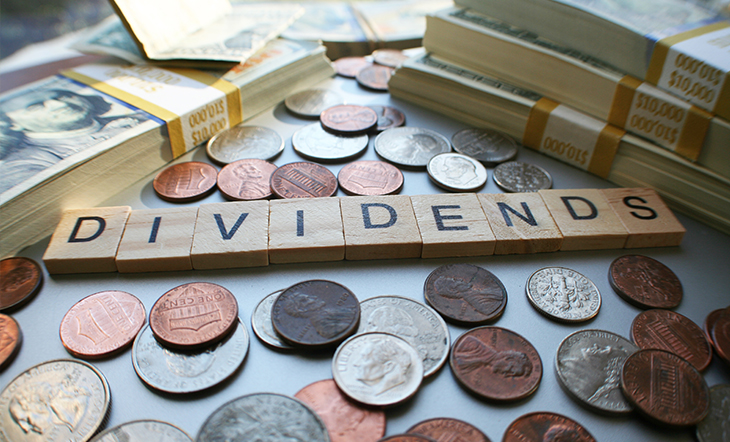Not all dividend stocks are created equal. Some offer high dividend yields, others consistent dividend growth. During market downturns, dividends may also help you tide through psychologically since you still have an income coming in.
However, investors need to be wary of the pitfalls of focusing too much on dividends when investing in stocks (or yield in general for any asset). Often ignored is the potential capital loss and ultimately the underlying business, which is of utmost importance to long term investors.
Here are some of the pitfalls you need to be wary of:
High Payout Ratio
Companies with high payout ratios pay out the majority of their earnings as dividends to shareholders. That in itself may not be a bad thing. REITs for example, are obliged to pay 90% of income as distributions.
Large and mature companies with steady earnings usually have payout ratios in excess of 50%, since these companies probably are producing more earnings/cash than they can find opportunities for. Utilities, consumer staples, and healthcare companies are some that generally pay steady dividends.
However, investors need to be careful when high payout ratios are due to stagnant or declining earnings. These companies might feel pressured to maintain their dividends to avoid upsetting shareholders. If you were merely looking at the steady or even growing dividend without keeping tabs on the company fundamentals, you might be caught off guard then the dividend eventually becomes unsustainable.
Of particular concern is when payout ratio exceeds 100%, which means that the company is paying out dividends in excess of earnings.
High Dividend Yield
Similarly, companies with high dividend yields (arbitrarily above 5%) might not be backed up by strong fundamentals. Since dividend yield is basically annual dividend/share divided by price/share, dividend yields could be increasing due to falling share price.
During a bear market or downturn, there might be many companies offer high dividend yields likely due to falling share prices. However once again, investors need to be wary of deteriorating fundamentals.
Dividend yield are also lagging metrics, since most companies only declare dividends quarterly or semi-annually. Investors might be in for a rude awakening when a company with high dividend yield on paper ends up cutting its dividend like what happened during the covid pandemic.
Low or Negative Total Return
Companies paying consistent and even growing dividends might be masking the fact that their share prices aren’t performing well. As investors, we need to look at both dividends and share price movement (hopefully appreciation), i.e. total return.
The best way to illustrate this is through examples. In fact, I have 2 that I used to invest in – 3M (ticker MMM) and Walgreens Boots Alliance (ticker WBA). 3M is a Dividend King and WBA is a Dividend Aristocrat. However, both these stocks actually have a negative total return (price change including reinvested dividends) over the past 1Y, 3Y, and 5Y. WBA is even has a negative 10Y total return which means that even with the steady and increasing dividend, WBA would’ve lost you money if you held for 10 years.

How to Avert Dividend Disaster
Focus on company fundamentals first and foremost. Companies with wide moats (competitive advantage), strong brands, consistent revenue growth, abundant free cash flows, and low to no debt are usually more resilient and better prepared for tough times. When the economy is strong and growing (rising tide), almost every other company will be able to grow and increase in share price.
Then, look into the stock’s historical total return instead of just looking at dividend yield, dividend growth or price change. Total return would provide an apples to apples comparison between growth, value and dividend stocks. Remember though that historical performance is not a guarantee of future performance.
Final Thoughts
Dividends are great if you need the income, since you don’t have to sell stock thus incurring transaction costs. Dividends can also help investors psychologically by staying invested during market downturns.
However, investors need to be aware of the pitfalls of focusing too much or exclusively on dividends when investing. Remember to also evaluate the company fundamentals and not to hold on too tightly to a sinking ship despite the attractive dividends.
If you’re interesting in getting a diversified exposure to dividend stocks via an ETF, you can consider looking into the Schwab US Dividend Equity ETF (ticker SCHD), which helps you screen for stocks based on quality and sustainability of dividends also taking into consideration fundamentals.
Follow me on Facebook, Telegram, Twitter and Youtube.
Disclaimer: This is not financial advice. I am not professional financial advisor nor do I work in the finance industry. Anything I write here is purely my personal opinion. Please do your own research and due diligence before investing into anything. All investments come with associated risks. Best to consult a financial advisor if you’re still unsure.
Download my FREE Ebook: How to Start Investing in Stocks for Beginners

For more investing tips, visit my Guide page.
- Standard Chartered Online Trading: Referral link
- FSMOne: Referral code P0267058
- Tiger Brokers: Referral link | Review
- Futu SG (moomoo app): Referral link | Review
- Webull: Referral link
- Syfe Wealth & Syfe Trade: Referral code FINANCEGNOME | Referral link | Review
- Endowus: Referral code J5HPB | Referral link
- CoinHako: Referral link
- Crypto.com: Referral link
- Portseido: Referral link
For more investing resources, see my Referrals page.
Disclosure: This post may contain affiliate links and I may get a commission when you click on the links or open an account through the links, at no additional cost to you. I only recommend products or services that I have personally tried and have found useful.


One thought on “How Dividend Investing Can Potentially Wreck Your Portfolio”
Comments are closed.